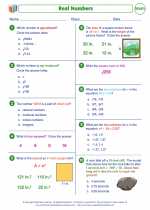Constants in Mathematics
In mathematics, a constant is a value that does not change. It is a fixed and well-defined number or quantity. Constants are used in mathematical expressions, equations, and formulas to represent known values that remain the same throughout a problem or calculation.
Types of Constants
There are several types of constants in mathematics:
- Numerical Constants: These are specific numerical values, such as 3.14 (pi) or 2.71828 (e).
- Physical Constants: These are mathematical representations of physical quantities, such as the speed of light (c) or the gravitational constant (G).
- Mathematical Constants: These are special numbers that arise in mathematical contexts, such as the golden ratio (φ) or Euler's constant (γ).
- Universal Constants: These are constants that have universal significance in scientific and mathematical calculations, such as the Planck constant (h) or the Boltzmann constant (k).
Examples of Constants
Some common examples of constants in mathematics include:
- The value of pi (π) ≈ 3.14159
- The base of the natural logarithm (e) ≈ 2.71828
- The speed of light in a vacuum (c) ≈ 299,792,458 meters per second
- Avogadro's number (NA) ≈ 6.022 × 1023 particles per mole
Using Constants in Mathematics
Constants are used in mathematical expressions and formulas to represent fixed values that are known and do not change. For example, in the formula for the area of a circle, the constant π is used:
Where r is the radius of the circle and π is a constant value representing the ratio of the circumference to the diameter of a circle.
Study Guide for Constants
When studying constants in mathematics, it is important to:
- Understand the concept of a constant as a fixed and unchanging value.
- Recognize and memorize common mathematical constants, such as π, e, and physical constants like the speed of light and gravitational constant.
- Learn how to use constants in mathematical expressions and formulas, and understand their significance in various mathematical and scientific contexts.
- Practice solving problems and equations that involve constants to reinforce understanding and application of these values in mathematics.
Understanding constants is fundamental to many areas of mathematics and science, and mastering their use can greatly enhance problem-solving abilities in these disciplines.
[Constants] Related Worksheets and Study Guides:
.◂Math Worksheets and Study Guides Eighth Grade. Real numbers
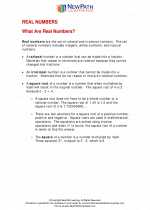
 Worksheet/Answer key
Worksheet/Answer key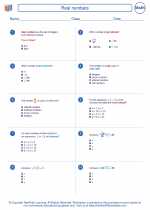
 Worksheet/Answer key
Worksheet/Answer key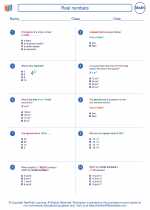
 Worksheet/Answer key
Worksheet/Answer key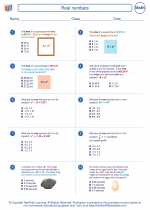
 Worksheet/Answer key
Worksheet/Answer key